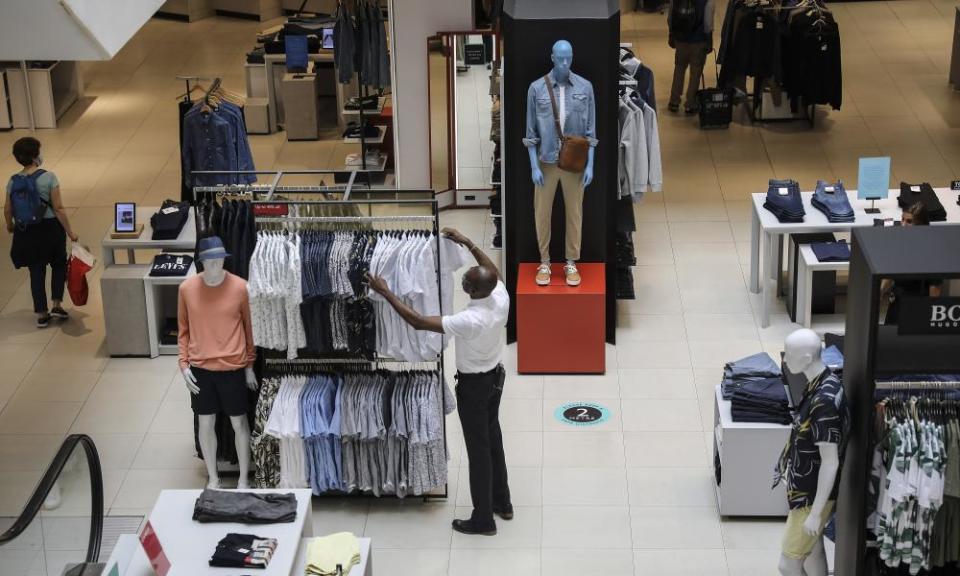John Lewis: would ending staff ownership help the retailer, and is its boss’s strategy failing?

Could breaking the staff-ownership model be the answer for the owner of John Lewis and Waitrose, which is considering bringing in outside investment of up to £2bn as a way to secure its future after reporting hefty losses?
The John Lewis Partnership has been owned by its employees since the 1920s, meaning they receive an annual bonus based on profits in a set-up that motivated staff and helped it expand into a stalwart of the British high street.
The model was so successful that just a decade ago the then deputy prime minister, Nick Clegg, was hailing it as a template for a future “John Lewis economy” in which workers took stakes in the firms that employ them.
Related: John Lewis faces criticism over plans to dilute mutual model
However, hefty losses of £234m in the past year – despite £12bn of sales – have diminished its resources, forcing JLP to scrap its staff bonus this year for only the second time since 1953.
Its chair, Sharon White, is looking for innovative ways to raise funds to turn around and develop the business, but under its current model cannot issue new shares to investors to raise money without a big change to its constitution – and its image.
White believes the group’s retail arm can no longer sustain the profit levels sufficient to pay a regular bonus to employees and so wants capital to expand into financial services and build to rent above Waitrose stores.

Currently the business has a fairly strong balance sheet with £1bn of cash and short-term investments, and undrawn bank facilities of £420m. It has net debt of £1.7bn, led by lease obligations. Only £50m of that must be paid off short term – in December this year – and a further £300m in January 2025.
However, with debt markets currently tight, particularly for consumer-facing businesses, the partnership is heavily reliant on its own cash resources to invest and meet its obligations.
Richard Hyman, the veteran retail analyst, says that JLP’s consideration of selling a stake is “being done from a position of growing weakness”. He suggests that losing staff owned status would be a “big, big price to pay” and potentially the thin end of a wedge that could cost John Lewis and Waitrose their crucial point of difference over numerous rivals.
Hyman describes mutuality as an essential element of the brands that “permeates everything”. Neil Saunders, a retail analyst at GlobalData and former John Lewis employee, concurs, tweeting: “The partnership’s aim should not be to turn itself into any other old retailer. It’s already adopted a defeatist attitude to retail – assuming it has to seek profits elsewhere to survive.”

Hyman is also sceptical that White would be able to persuade JLP’s staff council, a vital part of its democratic structure, to agree to shift from 100% employee ownership.
He suggests that the £400m JLP has set aside to invest in shifting into build to rent and other new areas, would be better spent on improving its retail business – upgrading stores, IT and product to help lift sales and improving basics such as availability of products.
“Their eye is already not sufficiently on the ball and [shifting into] non-retail only take the eye more off the ball,” he says.
With better cashflows from retail, and less emphasis on potentially expensive and risky new lines of business, the partnership would have less need to raise new money.
“Something clearly needs to change,” says Nick Bubb, another independent retail analyst. He also argues that the business “needs better management” with more retail experience – questioning the appointment as chief executive last week of the former Hovis boss Nish Kankiwala – a private equity expert who has never run a British high street shop who was selected from the JLP non-executive board.
However, Bubb says he doesn’t believe ending total staff ownership would damage morale or customers’ belief in the brands and “what’s damaging morale is not making money or paying a bonus”.

John Lewis has suggested that it could find ways of handing over a minority stake in return for investment without the group losing its mutual status.
The Employee Ownership Association said that some staff-owned models do allow minority shareholders – for example for founders such as Guy Singh-Watson at Riverford Organics. A spokesperson said that employee-owned businesses were “often at a disadvantage to traditional models when it comes to access to capital” and some “simple tweaks to UK legislation” could improve that.
There are several potential models around the world which allow mutuals to access “patient capital”, rather than turning to hedge funds or private equity which are led by more short-term gains of three to five years, aims rather at odds with businesses such as JLP.
In the UK, the government-owned development bank created British Patient Capital which has a £2.5bn investment programme including over 1,000 companies including the Dementia Discovery Fund and Advent Life Sciences, which invests in drug research but also LoveCrafts, an online craft supplies marketplace.
Whether such funds would consider investing in an ageing retailer is another question.

 Yahoo Finance
Yahoo Finance 